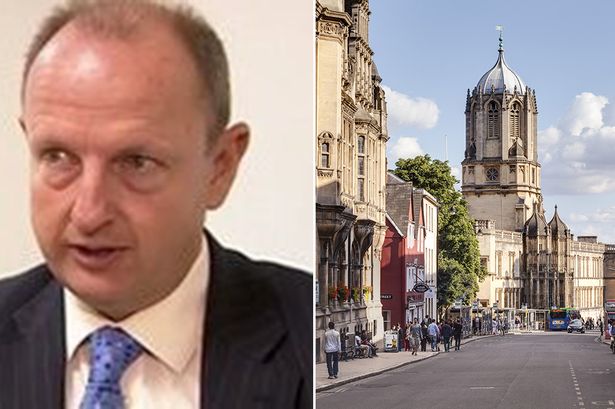The chilling assertion by Simon Morton, a former senior investigating officer for Thames Valley Police, that grooming gang perpetrators remain active and undetected in Oxford paints a disturbing picture of ongoing vulnerability and systemic failure. His statement suggests that despite previous investigations, convictions, and public outcry, the underlying problem of predatory networks exploiting children and young people persists. It raises serious questions about the effectiveness of law enforcement strategies, the depth of understanding regarding the nature of these crimes, and the adequacy of safeguarding measures designed to protect vulnerable individuals. Morton’s warning necessitates a comprehensive examination of the factors that allow these perpetrators to operate with impunity and a renewed commitment to dismantling the networks that facilitate their abuse.
The persistence of grooming gangs, particularly in light of past scandals and heightened public awareness, points to a complex interplay of factors that hinder effective intervention. One crucial element is the sophisticated nature of the grooming process itself. Perpetrators often target vulnerable individuals, building relationships based on manipulation, coercion, and the exploitation of existing needs. They may offer gifts, attention, and a sense of belonging, creating a powerful bond that makes victims reluctant to disclose abuse. Furthermore, these perpetrators frequently operate within tightly knit networks, leveraging intimidation and fear to maintain silence and obstruct investigations. This creates a climate of fear and distrust, preventing victims from coming forward and hindering the ability of law enforcement to gather sufficient evidence.
Another contributing factor is the potential for institutional failures and societal biases that can inadvertently shield perpetrators from scrutiny. Past investigations have revealed instances where professionals, such as social workers, teachers, and police officers, failed to recognize or adequately respond to signs of abuse. This can be attributed to a lack of training, an underestimation of the problem’s prevalence, or a tendency to dismiss victims’ accounts due to their age, background, or perceived credibility. Moreover, societal biases, including racism and Islamophobia, can further complicate matters by creating a reluctance to acknowledge the involvement of specific communities in these crimes, potentially leading to missed opportunities for early intervention and prevention.
Addressing the ongoing threat of grooming gangs requires a multifaceted approach that tackles the problem from multiple angles. Firstly, there needs to be a greater emphasis on proactive policing strategies, including intelligence gathering, surveillance, and disruption of known networks. This requires dedicated resources and specialized training for law enforcement personnel to identify and interpret the subtle signs of grooming and exploitation. Furthermore, strengthening partnerships between police, social services, and community organizations is crucial for effective information sharing and coordinated responses. This collaborative approach can help to identify potential victims early on and ensure that they receive the necessary support and protection.
Beyond law enforcement interventions, significant societal changes are required to address the root causes of this problem. Education plays a vital role in raising awareness about the risks of grooming, empowering young people to recognize and resist manipulative behavior, and fostering a culture of reporting. This includes providing comprehensive sex and relationship education in schools, equipping parents and caregivers with the knowledge and tools to safeguard children, and challenging harmful social norms that perpetuate gender inequality and the normalization of exploitation. Furthermore, addressing the underlying vulnerabilities that make individuals susceptible to grooming, such as poverty, social isolation, and lack of access to support services, is essential for long-term prevention.
Finally, ensuring that victims receive appropriate support and justice is paramount. This includes providing access to specialized therapeutic services that address the complex trauma associated with abuse, ensuring their voices are heard throughout the legal process, and holding perpetrators accountable for their crimes. Creating a safe and supportive environment for victims to come forward is crucial for breaking the cycle of silence and ensuring that perpetrators are brought to justice. The statement by Simon Morton serves as a stark reminder that the fight against grooming gangs is far from over, and a concerted effort is needed to protect vulnerable individuals and dismantle the networks that enable this abhorrent abuse. Only through a combination of robust law enforcement, societal change, and unwavering commitment to supporting survivors can we hope to eradicate this insidious crime.














